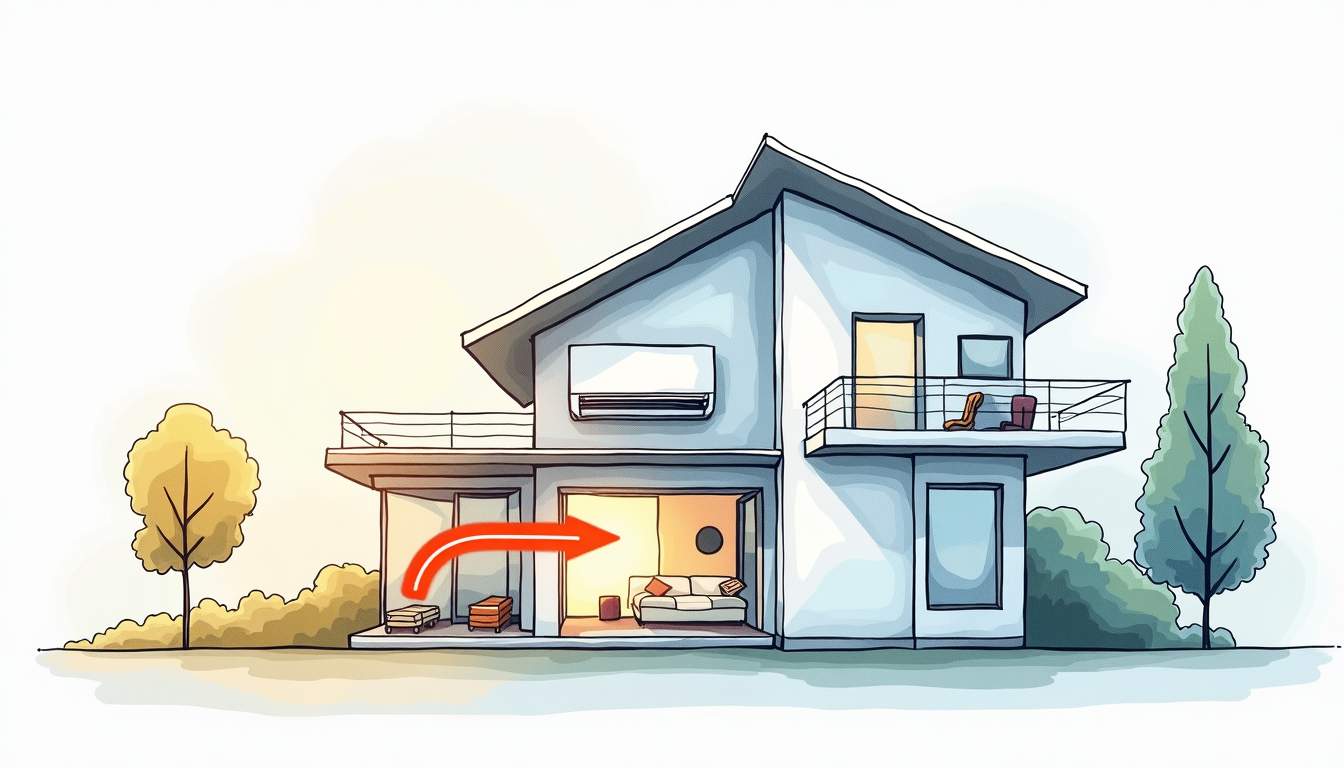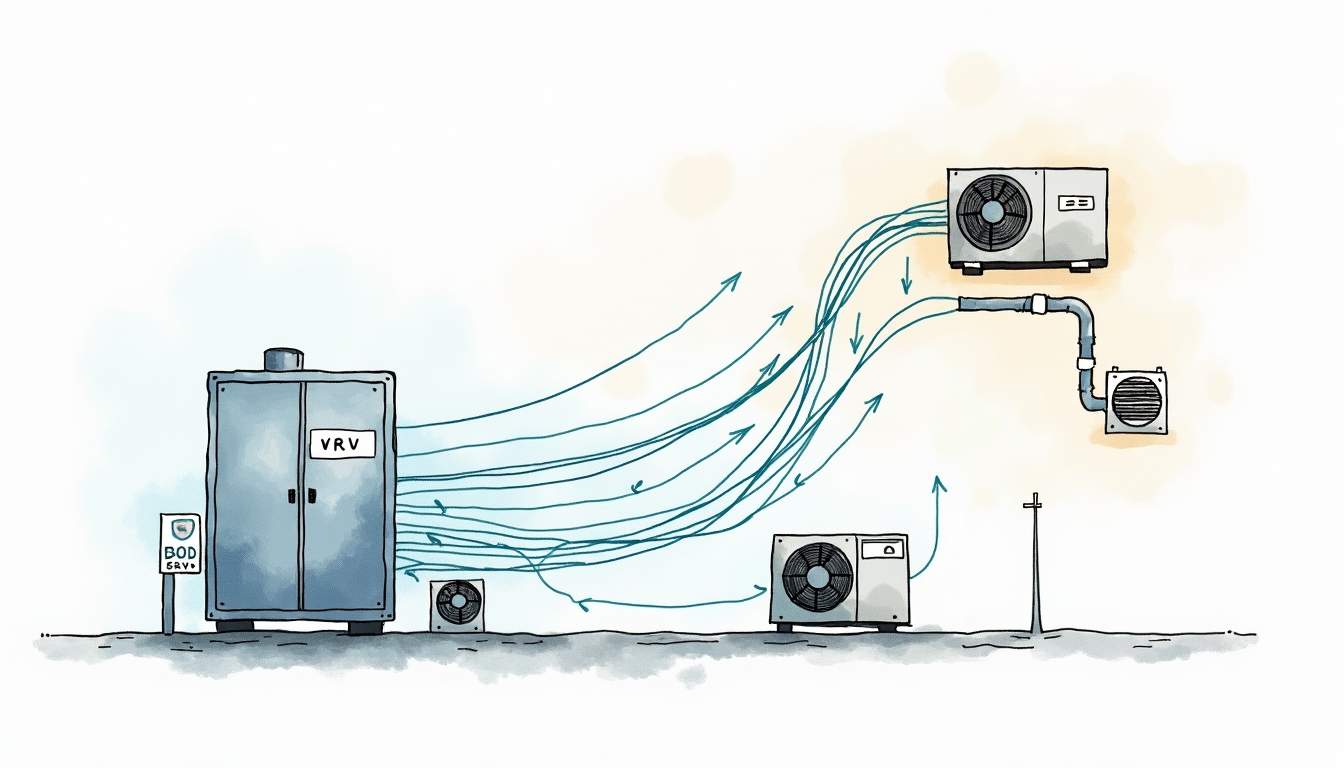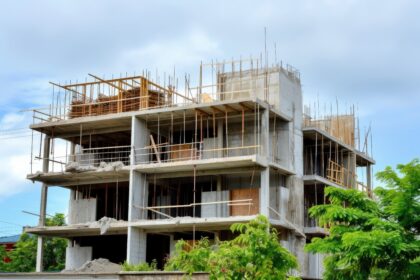
Imagine walking into a space where the temperature feels just right-never too hot, never too cold. Each room maintains its own perfect climate without the constant hum of noisy air conditioners or the uneven airflow that leaves some corners chilly and others stuffy. This level of comfort is what Variable Refrigerant Volume (VRV) systems promise. But are they really worth the investment for your home or office? Let’s break down what VRV systems are, how they work, and whether they make sense for your space.
What Exactly Is a VRV System?
At its core, a VRV system is a type of HVAC technology designed to provide precise temperature control across multiple zones within a building. Sometimes called Variable Refrigerant Flow (VRF) systems, these setups use a single outdoor unit connected to multiple indoor units. Each indoor unit can be controlled independently, allowing different rooms or areas to have customized temperatures.

The name “Variable Refrigerant Volume” refers to the system’s ability to adjust the amount of refrigerant flowing to each indoor unit based on the cooling or heating demand. This flexibility is what sets VRV systems apart from traditional HVAC systems that often run at full capacity or not at all.
How Does It Work?
Think of the VRV system as a network. The outdoor unit acts like a central hub pumping refrigerant through a series of pipes to the indoor units. Sensors and smart controllers monitor the temperature in each zone and regulate the refrigerant flow accordingly. This means if one room needs cooling while another requires heating, the system can handle both simultaneously.
Because of this dynamic control, VRV systems can operate more efficiently. They avoid the energy waste common in older systems that cycle on and off or blow conditioned air uniformly regardless of individual room needs. This efficiency not only leads to lower energy bills but also contributes to a reduced carbon footprint, making VRV systems an environmentally friendly choice for modern buildings.
Moreover, VRV systems are known for their quiet operation, which is a significant advantage in residential and commercial settings where noise can be a concern. The outdoor units are designed to minimize sound output, allowing occupants to enjoy a comfortable environment without the disruptive noise often associated with traditional HVAC systems. Additionally, many VRV systems come equipped with advanced filtration options that improve indoor air quality by removing dust, allergens, and other pollutants, creating a healthier living or working space. If you want to get expert assistance, visit SoCool.
Advantages of VRV Systems for Your Space
Energy Efficiency That Saves Money
One of the biggest draws of VRV systems is their energy efficiency. By delivering only the amount of heating or cooling each zone requires, these systems reduce unnecessary energy consumption. This can translate into noticeable savings on utility bills over time, especially in larger spaces or buildings with varied occupancy patterns.
Unlike traditional HVAC systems, which often operate in an all-or-nothing fashion, VRV systems modulate their output. This modulation means less energy is wasted, and the system can maintain comfort levels more steadily. Additionally, many VRV systems come equipped with smart technology that allows for real-time monitoring and adjustments based on occupancy and external weather conditions. This feature not only enhances energy savings but also ensures that the system operates at peak efficiency, adapting to the specific needs of the environment throughout the day.
Customized Comfort for Every Room
Everyone has their own comfort preferences. Some like it cooler, others warmer. VRV systems accommodate this by allowing individual temperature settings for each indoor unit. This is a game-changer for offices where employees share a space but have different comfort needs or for homes where living rooms, bedrooms, and kitchens require different temperatures.
Additionally, because each indoor unit operates independently, you can turn off the climate control in unused rooms, further enhancing energy savings. This feature is particularly useful in seasonal climates where certain areas of a home or office may not need heating or cooling at various times of the year. Moreover, the ability to control temperatures on a room-by-room basis can lead to improved overall comfort, as occupants can create their ideal environment without affecting others. This level of customization not only enhances satisfaction but can also lead to increased productivity in workspaces.
Quiet and Discreet Operation
Traditional HVAC systems can be noisy, especially older models with bulky compressors and fans. VRV systems are designed with quieter operation in mind. The outdoor units are often located away from living or working areas, and the indoor units use advanced technology to minimize noise.
This quiet operation contributes to a more pleasant environment, whether you’re trying to concentrate at work or relax at home. Furthermore, the sleek design of VRV indoor units means they can blend seamlessly into the decor of any space, making them not only functional but also visually appealing. With options like ceiling cassettes that sit flush with the ceiling or wall-mounted units that take up minimal space, VRV systems can maintain the aesthetic integrity of your environment while providing superior comfort.
Flexible Installation Options
VRV systems come with a range of indoor unit styles—wall-mounted, ceiling cassette, ducted, and more. This flexibility allows them to fit into various architectural designs without compromising aesthetics.
Because the system uses refrigerant piping instead of large ductwork, installation can be less invasive and more adaptable to existing structures. This is particularly beneficial in retrofit projects where adding ductwork would be costly or impractical. Additionally, the compact nature of VRV systems means they can be installed in tight spaces where traditional systems would struggle. This adaptability not only saves on installation costs but also allows for greater design freedom, enabling architects and designers to create spaces that are both functional and beautiful without being constrained by bulky HVAC equipment.
Potential Drawbacks to Consider
Higher Initial Investment
VRV systems generally come with a higher upfront cost compared to traditional HVAC units. The equipment itself is more complex, and professional installation requires specialized knowledge.
For some homeowners or small businesses, this initial expense might be a barrier. However, it’s important to weigh this against the long-term energy savings and comfort benefits.
Maintenance and Repairs Require Expertise
Because VRV systems are sophisticated, maintenance and repairs should be handled by technicians trained in this technology. Finding qualified service providers can sometimes be challenging, depending on your location.
Regular maintenance is crucial to keep the system running efficiently and to avoid costly breakdowns. Neglecting this can lead to performance issues or reduced lifespan.
Complexity May Not Be Necessary for Small Spaces
If you have a small home or office with relatively uniform temperature needs, a VRV system might be overkill. Simpler HVAC solutions could provide sufficient comfort at a lower cost.
It’s worth assessing the size and layout of your space before deciding on a VRV system. The technology shines in multi-zone environments where precise control and energy efficiency pay off.
VRV Systems in Residential Settings
More homeowners are turning to VRV systems as they seek smarter, more efficient ways to manage indoor comfort. These systems are especially appealing in larger homes with multiple floors or distinct zones like basements, attics, and living areas.

Imagine setting the bedrooms to a cooler temperature at night while keeping the living room warmer during the day-all without running multiple standalone units. VRV systems make this seamless and energy-efficient.
Additionally, the sleek design of indoor units means they blend well with home interiors. Unlike bulky window units or noisy portable air conditioners, VRV indoor units are subtle and unobtrusive.
Case Study: A Modern Family Home
A family in a suburban neighborhood installed a VRV system to replace their aging central air conditioner. Their home had five distinct zones, including a home office and a sunroom that tended to get hot in the afternoons.
With the VRV system, each zone was controlled independently. The sunroom stayed cool during peak heat, while the bedrooms were kept warmer at night without running the entire system. Over the first year, the family noticed a 25% reduction in energy bills and appreciated the quiet operation.
VRV Systems in Commercial and Office Spaces
Offices and commercial buildings often have diverse heating and cooling needs. Different departments or meeting rooms might require varying temperatures, and occupancy levels can fluctuate throughout the day.
VRV systems excel in these environments by providing zone-specific control and adapting to changing loads. This flexibility helps maintain employee comfort and can boost productivity.
Moreover, the energy savings can be substantial in large buildings where traditional HVAC systems might run inefficiently. The ability to heat and cool simultaneously in different zones is a unique advantage that many businesses find valuable.
Example: A Multi-Tenant Office Building
A multi-tenant office building installed a VRV system to replace individual window units and outdated central air conditioning. Each tenant could control their own indoor units, tailoring the climate to their preferences without affecting others.
Building management also benefited from centralized monitoring and maintenance. The system’s efficiency led to lower common area energy costs, and tenants reported higher satisfaction with their work environment.
Is a VRV System Right for You?
Deciding whether to invest in a VRV system depends on several factors. Consider the size and layout of your space, your budget, and your comfort priorities. If you value precise temperature control, energy efficiency, and quiet operation, a VRV system is worth serious consideration.
However, if your space is small or your budget tight, simpler HVAC solutions might be more practical. Consulting with an HVAC professional who understands VRV technology can provide valuable insights tailored to your specific needs.
Questions to Ask Before Installing
- How many zones or rooms need independent temperature control?
- What is the typical occupancy pattern in your space?
- Are there architectural constraints that make ductwork installation difficult?
- What is your long-term budget for installation and maintenance?
- Do you have access to qualified technicians for VRV system servicing?
Answering these questions will help clarify whether a VRV system aligns with your goals.
Final Thoughts
VRV systems represent a leap forward in HVAC technology, offering tailored comfort and energy savings that traditional systems struggle to match. Their ability to adapt to the unique demands of each zone makes them ideal for complex spaces, whether residential or commercial.

While the initial investment and maintenance requirements may be higher, the benefits often justify the cost for those seeking long-term comfort and efficiency. With the right planning and professional support, a VRV system can transform how you experience your home or office environment.


